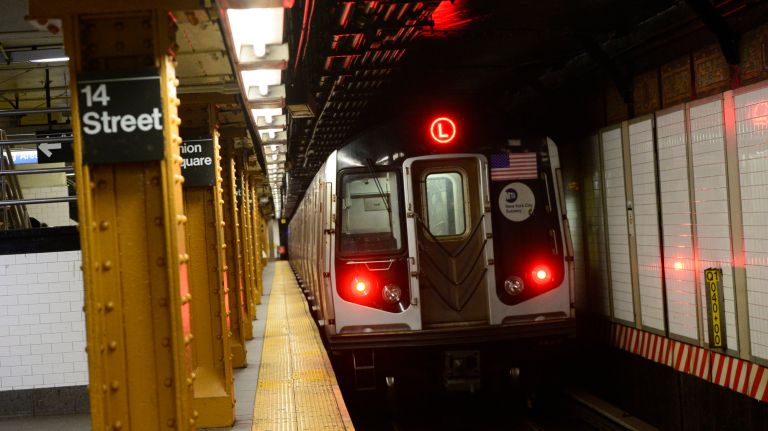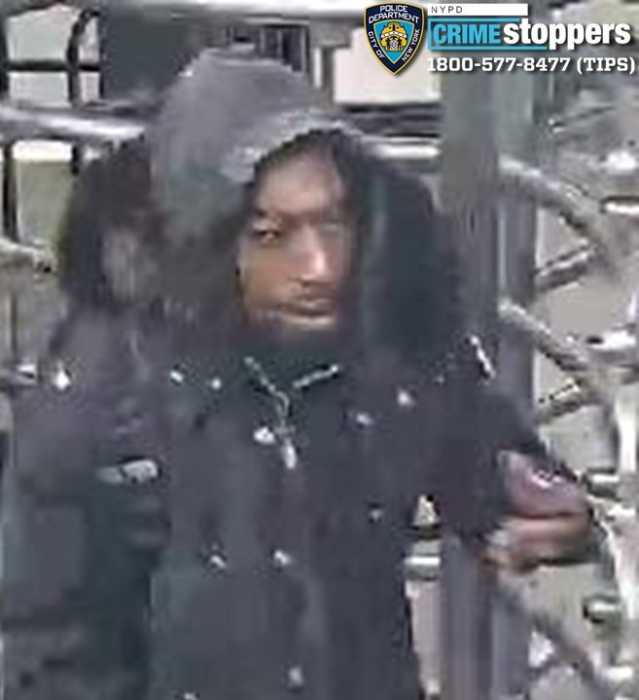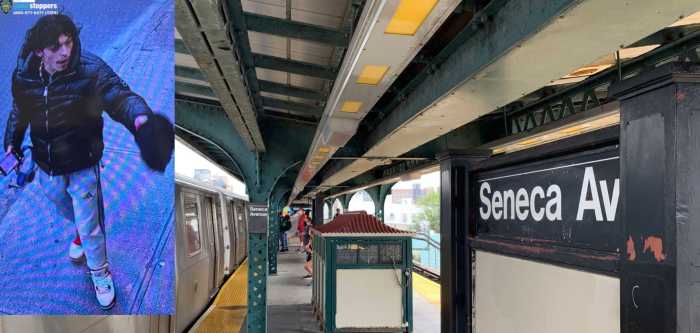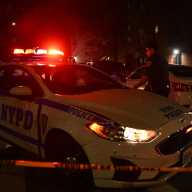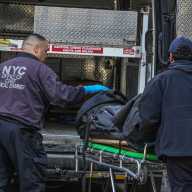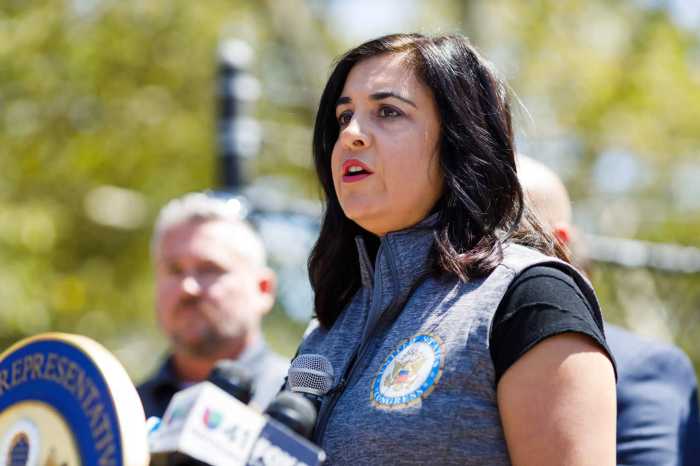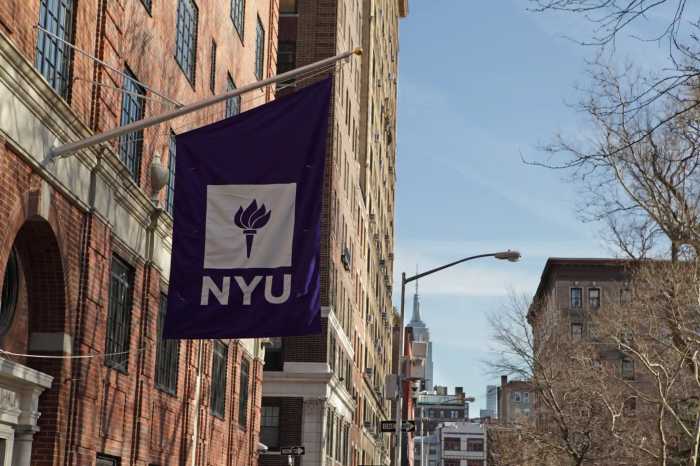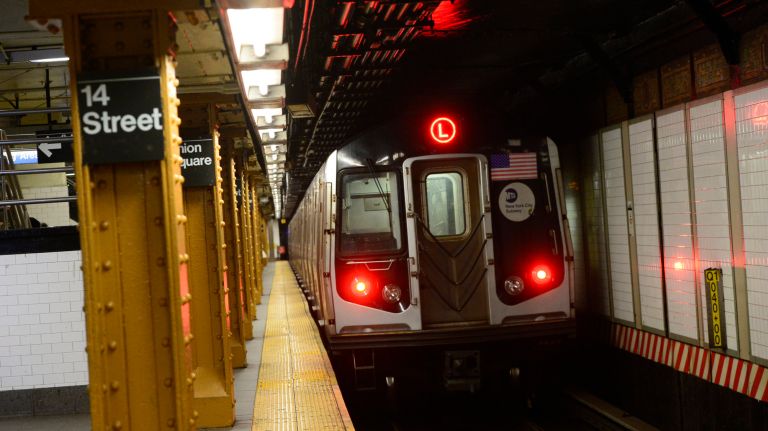
The L train shutdown — long scheduled to begin this April — does not need to happen, Gov. Andrew M. Cuomo said Thursday.
Instead of a full, 15-month shutdown of L train service between Manhattan and Brooklyn, the MTA can focus work solely during overnight and weekend hours, Cuomo said during an 11th-hour announcement that upended years of planning and the firm views of MTA executives who believed a lengthy tunnel closure would be needed for such repairs.
“Necessity is the mother of invention," Cuomo said, just more than three months before the shutdown was supposed to start, at his midtown office. "A closure of 15 months was highly problematic."
New approach
Now, only one of the Canarsie Tunnel’s two train tubes will have to close during the work, allowing some level of L service, Cuomo said, canceling what would have been the most disruptive service outage in the history of the Metropolitan Transportation Authority. The new rehabilitation would take 15 to 20 months, with 15- to 20-minute waits during the work on weekends, according to MTA Chairman Fernando Ferrer.
The changes in the scope of the project are possible due to what Cuomo described as a new, inventive design for the tunnel components, which was developed by engineers from Cornell and Columbia universities after Cuomo brought the academics on a mid-December tour of the Canarsie tunnel. The academics were inspired my newly developing methods, some proven and some unproven, in cities like London and Riyadh.
"This is, as we all know, a unique situation. We have a 100-year-old tunnel that was damaged by a flood," said Mary Boyce, the dean of engineering at Columbia University and a leader of the consulting effort. "This actually gives us that opportunity to be innovative … how do we really do the right, next new thing for the long term?"
It’s not completely clear how or when the work will start. The now-nixed shutdown was planned to begin on Saturday, April 27. Ferrer said he expects the reduced work to begin around the same time and come within the current $477 million contract to replace the tunnel. But the MTA must renegotiate that contract with its contractors, Judlau and TC Electric, and that reworked contract must be approved by the MTA’s board.
A representative of the contracting team did not immediately respond to a request for comment.
"You might ask, ‘Well why wasn’t this approach considered earlier?’ The answer is that the integration of these approaches — there are several — and the technology had not previously been applied in the context of a rehabilitation project," said Ferrer. "It’s innovative, creative and we deem it a sound plan."
The MTA still hopes to boost service on neighboring lines, like the G, M and 7. It will also carry out shutdown-related construction that will add power to the L line, in order to increase capacity, and add elevators along the line’s First Avenue and Bedford Avenue stations.
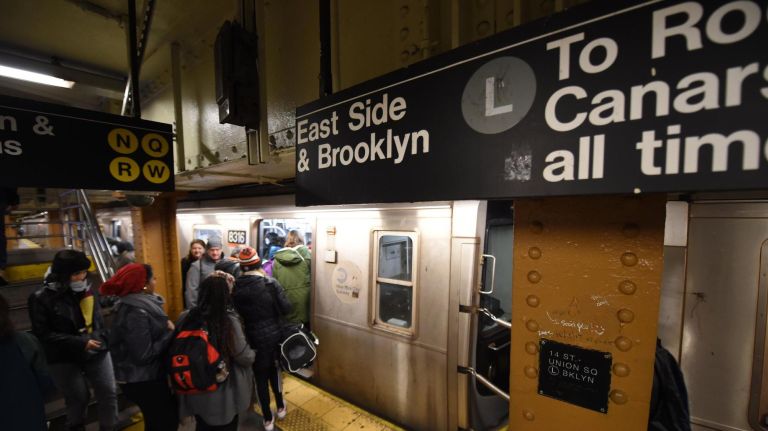
Open questions
While the new alternative would avoid displacing roughly 225,000 commuters who take the L between Manhattan and Brooklyn each day, some were skeptical of the timing of the announcement and whether it could be a legitimate fix for the decrepit tunnel. The MTA had spent years of time and money analyzing the tunnel project, while the engineers and the two universities crafted its less-impactful alternative within the matter of weeks.
John Raskin, the executive director at the advocacy group Riders Alliance, called for a "full public release of the details" of Cuomo’s plan for an outside review, pointing out that Cuomo effectively controls the MTA, a state authority.
"At the end of the day, what riders care about is whether the L train is repaired for the long term, and how much disruption it will take to get there," Raskin said. "The governor’s plan may or may not work, but you’ll pardon transit riders for being skeptical that a last-minute Hail Mary idea cooked up over Christmas is better than what the MTA came up with over three years of extensive public input."
Boyce and her counterpart, Lance Collins, the dean of engineering at Cornell, said that much of the disruptive work that would require a shutdown of service would be avoided if the MTA abandoned the idea of using the tunnel’s badly beat up concrete bench walls to encase power and communications cables for the trains. Under their proposal, those cables would be hung, or "racked," in the tunnel’s tubes and the old bench walls would be fortified, using "smart sensors" to detect damage that needs to be repaired.
The MTA board was notified of the alternative strategy shortly before Cuomo announced the news Thursday, but had not yet been formally briefed on the idea as the governor unveiled details.
Veronica Vanterpool, an MTA board member, questioned whether the repairs would be more than a patch job and, if so, why hadn’t the authority’s own experts identified the methods as a potential solution to rehabilitating the tunnel. She also lamented the time, money and staffing resources spent on planning and outreach on a project that the governor says doesn’t need to happen and how such a drastic shift could potentially damage the credibility of the MTA.
"My concern is whether this is just good short-term news for our residents; what are the long term implications of this decision? Are we just essentially putting a Band-Aid on a problem that has been well documented?" she said. "There are still a lot of questions that have to be answered."
The city, which has played a crucial role in planning for an L shutdown, seemed left in the dark. De Blasio said earlier Thursday that he would "reserve further judgment" on the governor’s announcement until he knew more details.
"Anything that avoids disruption, I favor, obviously," de Blsio said at an unrelated news conference. "And a lot of people in Brooklyn, a lot of people in Manhattan were really worried about the L train shutdown. If there’s a plan that can be good for the people of our neighborhoods, that’s great, but I want to reserve any further judgment until I hear more."
With Alison Fox



